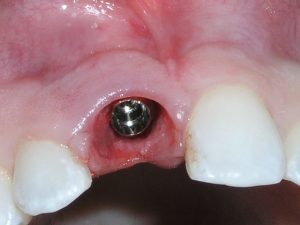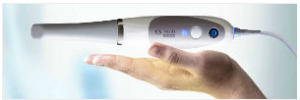Header logo
header top contact widget
Blog Archives
Recent Posts
Categories
Archives
- April 2024
- March 2024
- February 2024
- January 2024
- December 2023
- November 2023
- October 2023
- September 2023
- August 2023
- July 2023
- June 2023
- May 2023
- April 2023
- March 2023
- February 2023
- January 2023
- December 2022
- November 2022
- October 2022
- September 2022
- August 2022
- July 2022
- June 2022
- May 2022
- April 2022
- March 2022
- February 2022
- January 2022
- December 2021
- November 2021
- October 2021
- September 2021
- August 2021
- July 2021
- June 2021
- May 2021
- April 2021
- March 2021
- February 2021
- January 2021
- December 2020
- November 2020
- October 2020
- September 2020
- August 2020
- July 2020
- June 2020
- May 2020
- April 2020
- March 2020
- February 2020
- January 2020
- December 2019
- November 2019
- October 2019
- September 2019
- August 2019
- July 2019
- June 2019
- May 2019
- April 2019
- March 2019
- February 2019
- January 2019
- December 2018
- November 2018
- October 2018
- September 2018
- August 2018
- July 2018
- June 2018
- May 2018
- April 2018
- March 2018
- February 2018
- January 2018
- December 2017
- November 2017
- October 2017
- September 2017
- August 2017
- July 2017
- June 2017
- May 2017
- April 2017
- March 2017
- February 2017
- January 2017
- December 2016
- November 2016
- October 2016
- September 2016
- August 2016
- July 2016
- June 2016
- May 2016
- April 2016
- March 2016
- February 2016
- January 2016
- December 2015
- November 2015
- October 2015
- September 2015
- August 2015
- July 2015
- June 2015
- May 2015
- April 2015
- March 2015
- February 2015
- January 2015
- December 2014
- November 2014
- October 2014
- September 2014
- August 2014
- July 2014
- June 2014
- May 2014
- April 2014
- March 2014
- February 2014
- January 2014
- December 2013
- November 2013
- October 2013
- September 2013
- August 2013
- July 2013
- June 2013
- May 2013
- April 2013
- March 2013
- February 2013
- January 2013
- December 2012
- November 2012
- October 2012
- September 2012
- August 2012
- July 2012
- June 2012
Difference Between Crown-&-Bridge And Dental Implants
Posted on Sep 28, 2017 by William J. Claiborne, DDS MS
When replacing one, two or several teeth in one area, one option is a crown & bridge. For many individuals, it seems most practical to go with the less-expensive option. Yet, there are several reasons you should weigh the advantages of Dental Implants vs. crowns and bridges, which are far more important than ‘perceived’ costs.
A bridge, initially, costs less than Dental Implants. Although the cost of a crown-&-bridge combination seems like ‘the way to go’ when it comes to replacing a tooth or teeth, many people are unaware of the long-term expenses and underlying issues.
Yet, over time, a crown-&-bridge can require upkeep. From root canals to crown replacement to cracked bridges that need replacing, these costs add up, and up and up and…
Let’s look at the differences between Dental Implants and crown-&-bridge other than cost.
Dental Implants are held by the jaw bone, which provides the same foundation as that of natural tooth roots. This means that replacement teeth do not need the support of adjacent, natural teeth that have been crowned to serve to support a bridge. By keeping your natural teeth ‘natural,’ you are able to maintain the integrity of natural tooth structure, giving a strong advantage to your oral health.

An implant serves as a tooth root replacement, held by the jaw bone.
Because Dental Implants use the natural foundation of your jaw bone, they give another advantage to your oral health. Dental Implants integrate with the structure of your bone. They recreate the presence of natural tooth roots and halt the process of bone loss.
Bone loss from missing teeth, or ‘resorption,’ occurs from the lack of stimulation that tooth roots provide to the jaw bone. Through this, they help to prevent the bone loss and gum recession that often accompany bridgework and partials.
Bone loss is a concern since it can place neighboring teeth at risk. As the bone shrinks in the area of missing teeth, the foundation of those teeth is compromised. Odds are, when a tooth is lost, the next one you’ll lose is one adjacent due to this bone loss.
Yet another advantage of Dental Implants? – Their ability to look, feel and function just as natural teeth. Some people prefer to keep the fact that they wear Dental Implants a private issue. With Dental Implants, no one need to ever know you have a ‘third set’ of teeth. Non-removable implant systems allow you to wake up with a smile and brush your implanted teeth along with your natural teeth!
The success rate of Dental Implants is one of the highest implant-in-bone types, including hips and knees. Properly selected, placed and maintained, Dental Implants offer a lifetime solution for tooth replacement. As a Periodontal specialist, I provide specific expertise in the diagnosis and placement of Dental Implants. This gives our patients an edge — specific knowledge, training and skills so they can enjoy teeth that look and feel just like their own (because they are!).
Consider Dental Implants based on the long-term advantages, for optimal oral health as well as a wise investment that will last your lifetime. Call (828) 274-9440 for a consultation to discuss your needs.
New Technology Means No More Messy Impressions
Posted on Sep 22, 2017 by William J. Claiborne, DDS MS
In addition to staying on top of the latest techniques and materials in periodontal treatment, I select advanced technology based upon its benefits to our patients. In addition to technology that helps to optimize treatment outcome, I incorporate advancements that allow patients to move efficiently and comfortably from the exam process to treatment to the final results.
This is what Carestream 3600 provides with fast, easy and accurate digital imaging. What is this?
If you’ve had impressions of the inside of your mouth made, you probably recall having a mold filled with an oozy substance placed over the upper or lower portion. This was held in place to ‘set’ firm and was then rocked back and forth to remove. From this impression, a mold was made to show unique contours that would be involved in treatment.
Using Carestream 3600, we are able to eliminate that process altogether while creating vibrant full HD 3D images. Using a small handheld device, I scan the full arch in one continuous motion for a more comfortable experience for our patient.
Carestream provides precision dimensions at every angle. While this helps us to achieve outstanding clinical results, our patients no longer need to have messy impressions taken.
Carestream 3600 also makes sharing the images with referring doctors or with a dental lab more straightforward—resulting in clearer communication and faster turnaround. I have found it to be especially helpful for Dental Implant cases.
We are pleased that our patients can enjoy a simpler process through this advanced technology. For more about Carestream 3600, visit: http://carestreamdental.com/us/en/scan/CS%203600#Features%20and%20Benefits
Custom-Made Trays For More Effective, Non-Surgical Treatment
Posted on Sep 15, 2017 by William J. Claiborne, DDS MS
As a dental specialist, my goal is to provide each patient with appropriate treatment through the most effective, yet conservative, means possible.
My philosophy has always been to “never over-treat or under-treat.” This applies to patients who require surgical procedures as well as those who can achieve oral wellness via non-surgical means.
Even though non-surgical periodontal treatment has its limitations, it can be made more effective by incorporating up-to-date techniques. Using these techniques, I can often restore the patient to periodontal wellness without the need for surgical measures.
One such technique is through the use of a Custom Tray Delivery System. I begin by creating a custom-fitted tray by taking impressions of the patient’s mouth. This gives the patient’s unique oral contours that are used to form a ‘tray’ that fits over the teeth and gums. This is similar to a mouth guard (but far less bulky).
After filling with prescribed medications, patients are able to use these trays at home. The trays keep the medicine in direct contact with the areas in need of treatment.
Although tray delivery systems are approved by the Food and Drug Administration (FDA), they have not been verified as an effective way to treat gum disease. We evaluate each patient’s condition to determine the appropriate treatment and if surgical or non-surgical means are needed. Thus, Tray Delivery Systems may not be helpful when it comes to overcoming certain levels of gum infection.
However, one condition we’ve found responds positively to Tray Delivery is in the treatment of erosive lichen planus. This is a chronic inflammatory condition inside your mouth. Lichen planus may appear as white and lacy patches, red and swollen tissues, or open sores and can cause burning sensations or pain.
Lichen planus isn’t contagious (through things such as kissing or sharing food and beverages). However, it is an autoimmune disorder and the result of the immune system attacking cells of the oral mucous membranes for unknown reasons. People with lichen planus are cautioned to have their condition monitored on a regular basis due to a higher risk for oral cancer.
In addition to regular monitoring, delivering medications through Tray Delivery Systems provides a dependable means of treatment that is non-surgical.
If you have questions about Tray Delivery Systems or any treatment, including the placement of dental implants, call 828-274-9440. We will be happy to arrange a consultation appointment to discuss various treatment options based upon your individual needs and goals.
Avoid Bad Breath
Posted on Sep 11, 2017 by William J. Claiborne, DDS MS
Whether at work, home with family members or mingling at social gatherings, knowing our breath is fresh makes us feel more confident. Naturally, we can’t always count on having fresh breath. A morning of coffee or a hot dog lunch, for example, can leave us sensing that being in close proximity can raise an eyebrow. Even worse, bad breath can leave an impression – a lasting one, at that.
Occasional bad breath is a nuisance and can generally be controlled with good oral hygiene, keeping our mouth moist and limiting sugar. However, frequent bad breath is not only embarrassing, it is a warning sign.
Persistent bad breath is one of the symptoms of periodontal (gum) disease. You may also notice tender gums that bleed easily when brushing or have swollen areas around some teeth.
However, gum disease can begin without obvious warning signs. By the time symptoms emerge, it is often at a level known as gingivitis. If not resolved promptly, subsequent stages will require prompt treatment.
As gum disease advances, symptoms include gums that turn red in color and become sore, swollen and bleed easily. You’ll have persistent bad breath and may develop pus-filled pockets near the base of some teeth. Eventually, teeth loosen and require removal.
The majority of bad breath (known clinically as ‘halitosis’) comes from the accumulation of oral bacteria in the mouth. Oral bacteria coat the teeth, gums, tongue, inside of cheeks and roof of the mouth.
Good saliva flow helps to keep this bacteria moving out of the mouth. However, when brushing is infrequent or insufficient or the mouth becomes dry, saliva becomes unable to manage the bacteria levels in the mouth.
Another contributor to oral bacteria in the mouth is wearing a denture. The ‘gum’ portion of a denture is made from a porous material. Bacteria are able to live and breed in these tiny hideouts. Food that is caught between teeth and not removed by brushing or flossing also contributes to bacteria growth that saliva can’t always keep up with.
As bacteria thrive and reproduce, they coat the inside of the mouth and form a sticky film. This film is known as ‘plaque.’ Plaque that remains for more than a day or so can harden into ‘tartar,’ or ‘calculus.’ This attaches to teeth and is resistant to being brushed or flossed away. These bacterial masses attack tooth enamel and gum tissues if not removed by a dental professional.
Keeping a moist mouth is very important to oral hygiene. Drinking plenty of water during the day is advised. Colas, sweet tea, and energy drinks actually make dryness worse. You should also monitor the medications you take (both prescription and over-the-counter) and look for side effects that include oral dryness. And, smoking is one of the worst contributors of all to oral dryness.
Proper brushing and flossing is necessary. Brush for at least two minutes twice daily and rinse thoroughly. Use a circular motion rather than scrub teeth back and forth to avoid damaging tender gum tissues. Never use a hard bristle tooth brush or brush with harsh substances such as baking soda!
After brushing, use a tongue scraper to uproot oral bacteria embedded in the grooves of the tongue. This will significantly lower bacteria levels. As a matter of fact, Dentistry IQ states that “A study at the State University of New York at Buffalo School of Dental Medicine found that 80 to 90% of bad breath comes from bacteria on the tongue” and is “the largest niche for microorganisms in the oral cavity.” (http://www.dentistryiq.com/articles/2014/04/a-deeper-look-into-tongue-cleaning.html)
An advantage of achieving and maintaining a clean, healthy mouth is having confidence when close to others. Plus, you’ll be contributing to the health and well-being of your entire body. Research has shown that a healthy mouth is a supportive component of a healthy you!
If you are experiencing symptoms of gum disease or are concerned your breath is frequently bad, call 828.274.9440. Let’s help you establish a healthy smile and feel confident in closeness!




